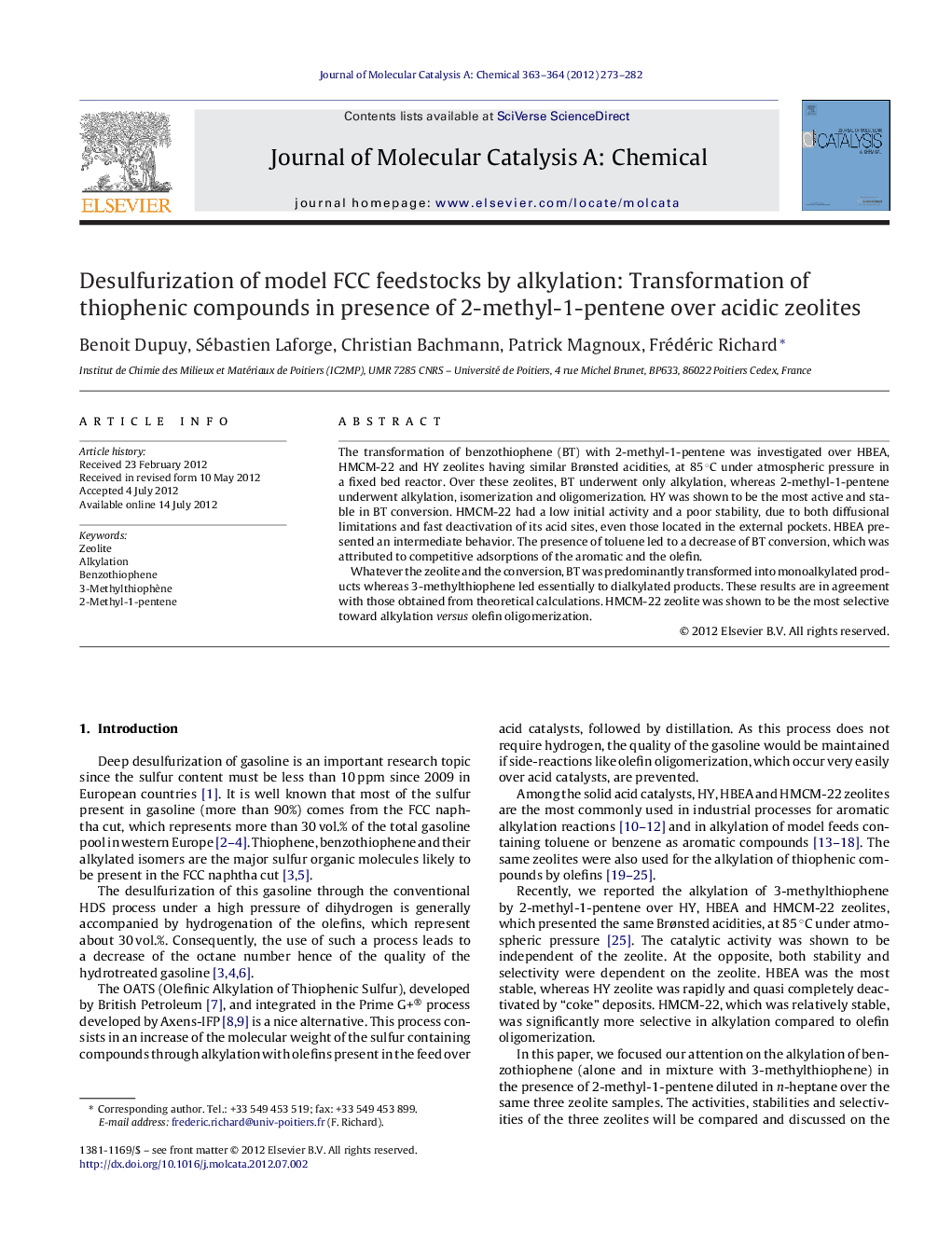| Article ID | Journal | Published Year | Pages | File Type |
|---|---|---|---|---|
| 66038 | Journal of Molecular Catalysis A: Chemical | 2012 | 10 Pages |
The transformation of benzothiophene (BT) with 2-methyl-1-pentene was investigated over HBEA, HMCM-22 and HY zeolites having similar Brønsted acidities, at 85 °C under atmospheric pressure in a fixed bed reactor. Over these zeolites, BT underwent only alkylation, whereas 2-methyl-1-pentene underwent alkylation, isomerization and oligomerization. HY was shown to be the most active and stable in BT conversion. HMCM-22 had a low initial activity and a poor stability, due to both diffusional limitations and fast deactivation of its acid sites, even those located in the external pockets. HBEA presented an intermediate behavior. The presence of toluene led to a decrease of BT conversion, which was attributed to competitive adsorptions of the aromatic and the olefin.Whatever the zeolite and the conversion, BT was predominantly transformed into monoalkylated products whereas 3-methylthiophene led essentially to dialkylated products. These results are in agreement with those obtained from theoretical calculations. HMCM-22 zeolite was shown to be the most selective toward alkylation versus olefin oligomerization.
Graphical abstractFigure optionsDownload full-size imageDownload high-quality image (123 K)Download as PowerPoint slideHighlights► HY the most active in alkylation of benzothiophene with 2-methyl-1-pentene. ► HMCM-22 the most selective in alkylation compared to olefin oligomerization. ► Monoalkylation favored in comparison to dialkylation. ► Alkylation product distribution on HY agrees with calculated carbocation stabilities. ► Inhibiting effect of toluene.
